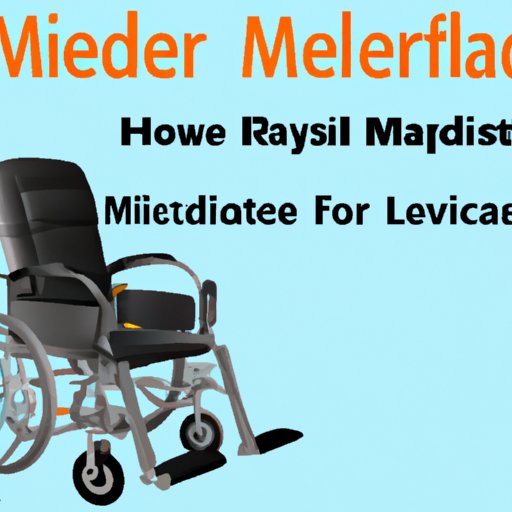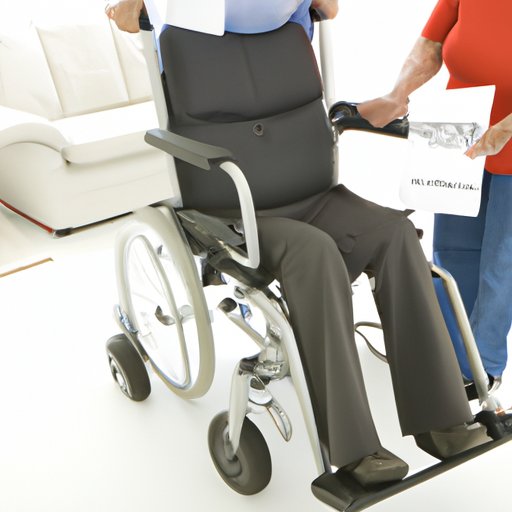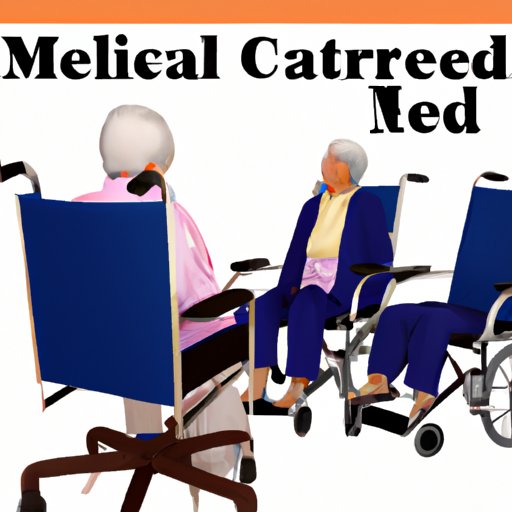Introduction
A lift chair is a type of medical device designed to help those with mobility issues get into and out of a seated position. It is typically used by individuals who have difficulty standing or sitting for long periods of time due to age, injury, or disability. Medicare coverage for lift chairs can be confusing, so it’s important to understand the details before making a decision.
In this article, we will explore the specifics of Medicare coverage for lift chairs. We’ll discuss what is covered, eligibility requirements, exclusions, and cost-sharing. We’ll also provide tips on how to get a lift chair covered by Medicare and explore the pros and cons of using Medicare for lift chair coverage. By the end of this article, you should have a better understanding of your options and how to take advantage of Medicare’s coverage.

A Comprehensive Guide to Medicare and Lift Chairs
Medicare is a federal health insurance program that provides coverage for individuals over 65, as well as people with certain disabilities. Medicare Part B covers durable medical equipment (DME), which includes items like wheelchairs, walkers, and lift chairs. However, Medicare does not automatically cover all DME; there are specific criteria that must be met in order for Medicare to cover a lift chair.
What Does Medicare Cover When it Comes to Lift Chairs?
In general, Medicare covers lift chairs if they are considered medically necessary for an individual’s condition. According to the Centers for Medicare & Medicaid Services (CMS), “medically necessary” means that the item is necessary for the diagnosis or treatment of an illness or injury, or to improve the functioning of a malformed body member. In other words, the lift chair must be prescribed by a physician for a specific medical reason.
For example, if an individual has difficulty getting into and out of a seated position due to arthritis, a doctor may prescribe a lift chair as a way to ease their discomfort. Medicare would likely cover the cost of the lift chair in this case. However, if the lift chair is being prescribed for convenience or comfort, Medicare is unlikely to cover the cost.
How Do I Know If My Lift Chair Is Covered?
The best way to determine if your lift chair is covered by Medicare is to talk to your doctor. Your doctor can provide a prescription for the lift chair and explain why it is medically necessary. You can then contact your Medicare provider to see if the lift chair is covered. If your lift chair is covered, you will need to submit the proper paperwork in order to receive reimbursement.
What You Need to Know About Medicare Coverage for Lift Chairs
Before applying for Medicare coverage for a lift chair, there are several things you should know. First, there are eligibility requirements that must be met in order for a lift chair to be covered. Generally, the individual must be over 65 years of age or disabled and meet certain financial criteria. Additionally, there are certain exclusions that may apply, such as if the lift chair is not considered medically necessary. Lastly, there may be cost-sharing involved, meaning that the individual may be required to pay a portion of the cost.

How to Get a Lift Chair Covered By Medicare
If you think your lift chair may be covered by Medicare, the first step is to contact your provider. You will need to provide them with a prescription from your doctor outlining why the lift chair is medically necessary. Once the paperwork is submitted, your provider will review it and determine if the lift chair is eligible for coverage. If so, you will need to submit additional paperwork in order to receive reimbursement.
It’s also important to consider other financial options when looking into lift chair coverage. For example, some states offer Medicaid waivers that can be used to cover the cost of a lift chair. Additionally, some manufacturers offer discounts or financing options for those who cannot afford the full cost of a lift chair.
Exploring Medicare’s Coverage of Lift Chairs
While Medicare coverage for lift chairs can be beneficial, there are both pros and cons to consider. On the plus side, individuals who qualify for Medicare coverage may be able to get the lift chair they need without having to pay out of pocket. Additionally, Medicare coverage can help reduce the cost of a lift chair significantly.
On the other hand, there are some downsides to Medicare coverage for lift chairs. For one, the eligibility requirements can be restrictive, meaning that not everyone will qualify. Additionally, there may be cost-sharing involved, and the paperwork process can be lengthy and complicated. Finally, there are certain types of lift chairs that may not be covered under Medicare, such as those that are considered luxury items.
Taking Advantage of Medicare’s Coverage of Lift Chairs
If you’re considering using Medicare to cover a lift chair, it’s important to understand your options and do your research. Start by talking to your doctor to determine if a lift chair is medically necessary and find out if you qualify for Medicare coverage. Then, contact your Medicare provider to discuss the details of the coverage and make sure you understand any cost-sharing involved.
When shopping for a lift chair, make sure to research providers to find one that is approved by Medicare. This will ensure that your lift chair is covered and help you avoid any unexpected costs. It’s also important to know your rights when it comes to Medicare coverage. If you have any questions or concerns, don’t hesitate to reach out to your provider for clarification.
Conclusion
Lift chairs can be a great aid for those with mobility issues, but it can be difficult to know if Medicare will cover the cost. In this article, we explored the specifics of Medicare coverage for lift chairs, including eligibility requirements, exclusions, and cost-sharing. We also provided tips on how to get a lift chair covered by Medicare and discussed the pros and cons of using Medicare for lift chair coverage.
By understanding your options and doing your research, you can take advantage of Medicare’s coverage of lift chairs and get the assistance you need. Just remember to talk to your doctor and contact your Medicare provider to make sure your lift chair is covered.
(Note: Is this article not meeting your expectations? Do you have knowledge or insights to share? Unlock new opportunities and expand your reach by joining our authors team. Click Registration to join us and share your expertise with our readers.)
